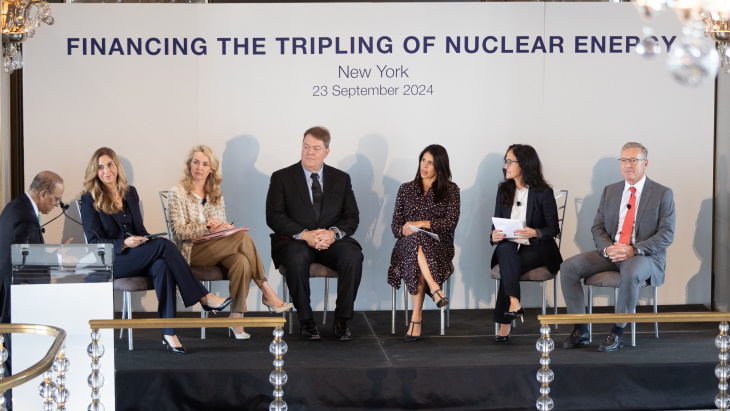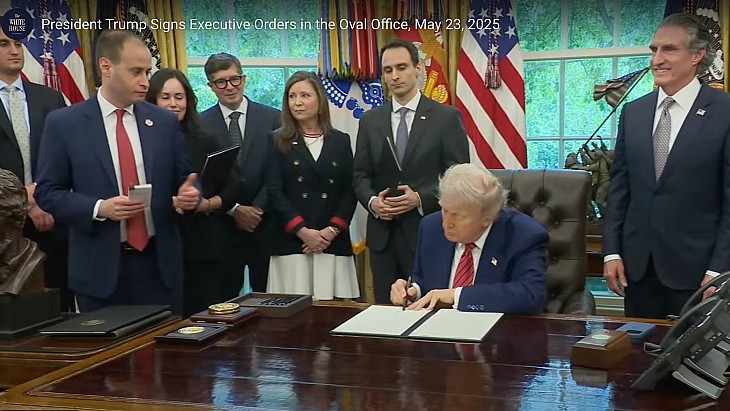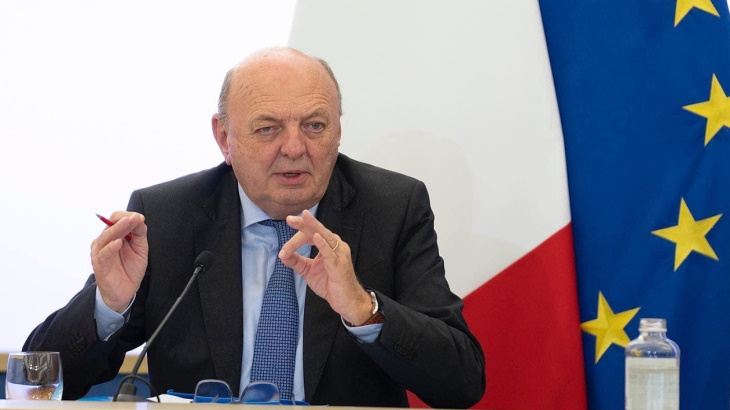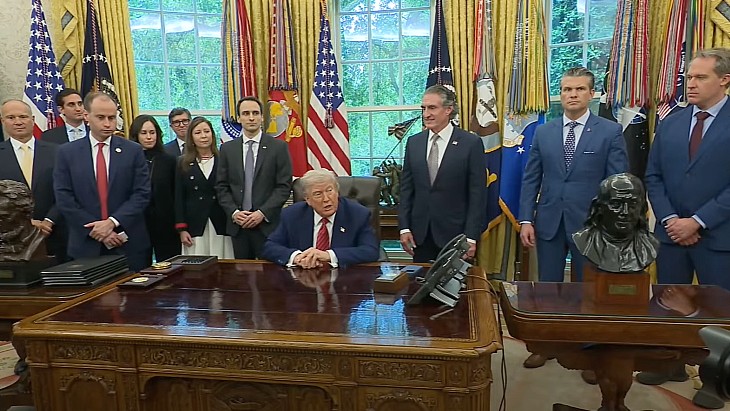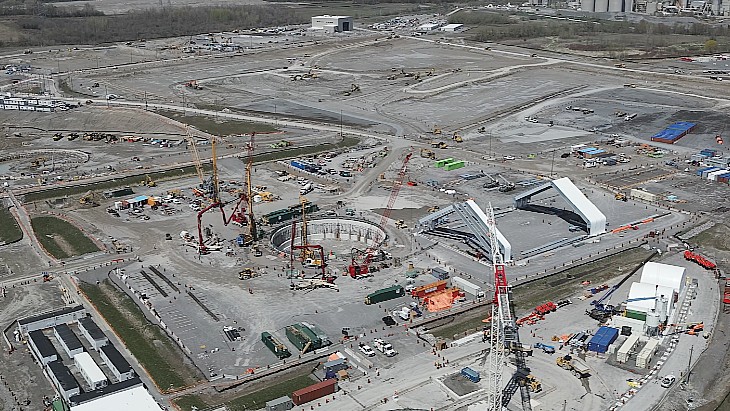Policymakers must drive nuclear further, report says
.jpg)
The report, which the London-based organisation published today, notes that worldwide nuclear generation in 2018 increased for the sixth successive year, up 61 TWh on the previous year, to reach 2563 TWh. This is more than 10% of global electricity demand. Nuclear generation grew most rapidly in Asia, where generation increased by nearly 12%, up 56.3 TWh to 533.0 TWh.
New generation
Nine reactors started supplying electricity in 2018, up from the four that started in 2017, and more than 20 reactors are due to come online before 2020. Overall, capacity additions for the period 2016-2020 are expected to reach the targets of the nuclear industry's Harmony programme, but build rates will have to increase significantly to achieve the overall goal of 1000 GWe of new nuclear capacity before 2050, the Association says.
Nine new reactors were connected to the grid, with a combined capacity of 10.4 GWe. Seven of these were constructed in China and two were in Russia.
Seven reactors were closed down in 2018, with a combined capacity of 5.4 GWe. Of these, four are Japanese reactors that had not generated since 2011, and a fifth, Taiwan's Chinshan 1, had not generated since 2015, so these closures had minimal impact on overall electricity generation in 2018. Four reactors in Japan, with a combined capacity of 5.6 GWe, were given approval to restart.
One "remarkable characteristic" of 2018, the report notes, was the prevalence of new reactor designs amongst the reactor start-ups. Haiyang 1 and 2 and Sanmen 1 and 2 were the first four AP1000s to begin operation, Taishan 1 was the first EPR, Leningrad II-1 was the first VVER-1200 and Yangjiang 5 the first ACPR-1000. Notably the second units at Haiyang and Sanmen had significantly shorter construction periods, demonstrating that even second units can benefit from experience of the first unit's construction.
The number of reactors under construction at the end of 2018 was 55, with construction starts on five reactors, compared to the nine that have been connected to the grid following completion of construction.
In Asia, nuclear generation rose by more than 10%, to reach 533 TWh, now more than one-fifth of global generation. In China, the first AP1000 and EPR reactors began commercial operation, alongside VVER V-428M and ACPR-1000 reactors. Although the four reactors gaining approval to restart in Japan brought the total number to nine, the pace of progress to restarting more reactors remains slow, continuing Japan’s reliance on fossil fuels.
The average construction time for reactors in recent years has been around five-to-six years, but the median time in 2018 was eight-and-a-half years, primarily due to the start-up of reactors utilising new designs. Construction times are expected to return to "more typical" recent durations in 2019.
With a combined capacity of 6279 MWe, construction started on five reactors in 2018, including Akkuyu 1, the first reactor in Turkey, and Hinkley Point C-1, the first reactor to begin construction in the UK since Sizewell B, 30 years previously. Rooppur 2 is Bangladesh's second nuclear reactor under construction, following its sister unit, which started construction in 2017.
In Russia, preparations for the first floating nuclear power plant continued, with both reactors on board the Akademik Lomonosov reaching first criticality. The vessel is scheduled be installed at Pevek, in northern Russia, later this year.
Performance
Nuclear power reactor performance is high, the report says. The world's nuclear reactors achieved an average capacity factor of 80%, much higher than many other forms of electricity generation. In 2018, the global average capacity factor was 79.8%, down from 81.1% in 2017. Despite this small reduction, this maintains the high level of performance seen since 2000 following the substantial improvement over the preceding years, it says.
"In general, a high capacity factor is a reflection of good operational performance. However, there is an increasing trend in some countries for nuclear reactors to operate in a load-following mode, which will reduce the overall capacity factor," the Association said.
The report notes that reactors are already demonstrating high performance irrespective of how long they have been in operation, with capacity factors of around 80% maintained regardless of age. The mean capacity factor for reactors over the last five years shows little variation with age, it says.
The report marks the achievement of 50 years of operation, a milestone that is being achieved for the first time this year by five reactors - Beznau 1 in Switzerland, Nine Mile Point 1 and R E Ginna in the USA, and Tarapur units 1 and 2 in India all started operating in 1969. Many reactors in operation today are planning to operate for 60-80 years.
In an interview for the report, Michael Dost, head of the Beznau nuclear power plant, said the 50 years of operation represent "a piece of Swiss history".
He said: "The Swiss pioneering spirit and a good deal of impressive engineering artistry manifest themselves in the plant. Our predecessors built something great, with a quality and precision that we still benefit from today."
Vitaly Trutnev, director of floating nuclear power plant construction and operation at Rosenergoatom, said Akademik Lomonosov will make it possible to avoid the consumption of 200,000 tonnes of coal and 120,000 tonnes of fuel oil annually, either directly or indirectly due to gas savings. "The plant decommissioning upon its service life expiration is also convenient for the hosting regions as the vessel will be towed to special facility berths leaving the site in a greenfield state," he added.
The report also includes interviews with Paul Swift, plant manager at R E Ginna Nuclear Power Plant, Pete Orphanos, site vice president at Nine Mile Point, Dietmar Reiner, senior vice-president of Enterprise Projects at Canada’s OPG.
Climate
Currently over two billion tonnes of CO2 is avoided by nuclear power each year, by helping to reduce the global dependence on coal. The more than 50 reactors under construction today will avoid the emission of an additional 450 million tonnes of CO2 each year by 2025. By that date nuclear reactors will avoid emissions equivalent to the annual CO2 emissions of Japan, Germany and Australia, combined, the Association said.
But policy is the key to growth, the report notes. Reactors in the USA produced more electricity in 2018 than in any previous year, with 808 TWh generated. One reactor retired, Oyster Creek, despite being licensed for an additional 10 years of operation, because revised water use rules would require construction of cooling towers.
"While some US states have introduced schemes that support nuclear generation by recognising the value of its clean, low-carbon generation, elsewhere other reactors are under threat from distorted and challenging market conditions," it says.
Rising notes in the conclusion of the report that the call for action on climate change has become "louder and more urgent" over the last 18 months.
"Some have questioned whether nuclear energy can be deployed quickly enough to tackle climate change in time. The fact is that nuclear energy is making a major contribution to avoiding climate change today, with more than 10% of the world’s electricity supplied by nuclear generation.
"One of the most effective actions to be taken to avoid greenhouse gas emissions is to ensure those reactors continue to operate to their full potential. The average age of the nuclear fleet is around 30 years. This year, five reactors have achieved 50 years of operation and reactors today are seeking approval for 60 or even 80 years of operation. Many of our current reactors have the potential to still be part of a fully decarbonised generation mix in 2050.
"If we are to be serious about climate change we should also be serious about the solutions. Transitioning to a low-carbon economy that meets the energy needs of the global community presents a daunting task. But it is a challenge that must be met, and one that can only be met by using the full potential of nuclear energy."
